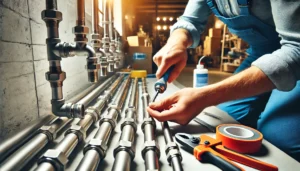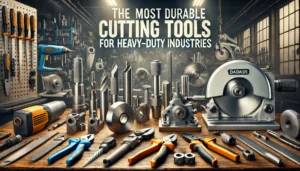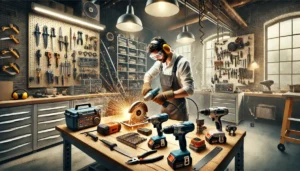In valve systems, cavitation is a common phenomenon which is critical to address as it causes lots of damage and is expensive to repair as well as reduces efficiency. IN this phenomenon, a liquid which is flowing through a valve experiences rapid pressure changes, this leads formation and drastic collapsing of vapour bubbles. ‘Shock’ waves are created during this process which can erode valve surfaces, make noises and vibrations, and disrupt normal system functioning. Therefore, it is suitable to say that identifying the primary cause of cavitation and solving them is critical for the reduction of valve integrity erosion and maximises the system operations.
What do you mean by cavitation in a Valve?
Cavitation in a valve occurs when the pressure in the fluid drops lower than the vapor pressure. A vapor bubble is formed and as more bubbles are formed in the fluid, the pressure pushes the bubbles back down, as this leads to even more vaporization. Instability in the bubbles is a common source of pressure in valves, and that pressure is a result of poor valve design, improper sizing, or the fluid being operated in conditions where it exceeds the upper limits of the valves purpose.
Some of the major causes that lead to cavitation are:
High Flow Velocity: An excess of fluid going through the valve results in high pressure which encourages cavitation.
Dynamic changes in pressure: Any abrupt changes in gas pressure can be detrimental especially for throttling valves as this may lead to cavitation.
Incorrect Valve Choice: Choosing a valve with the wrong diameter for the application significantly increases the chances of cavitation.
Inadequate System Design: Piping layouts with abrupt turns or directional changes and the proximity of valves can lead to aggravation of cavitation.
Impact of Cavitation on Valves
Cavitation, indeed, affects the functionality and the life span of a valve. Melted bubbles collapse and together they cause pressure greater than instantaneous pressure. What happens is as follows:
Erosion: Shock waves produced by the implosion of bubbles damage surfaces of valves namely trim and bubble seat leading to material loss and wear and tear of the material.
Noise and Vibration: The crack of cavitation is quite large, and because of this there is vibration which can lead to damage of other machinery in the surroundings and affect operations as well.
Reduced Efficiency: Cavitation treats the energy which is then absorbed into the ball causing the accuracy in the flow control to not be as precise as it should have been, which leads the system in which it operates to not function as efficiently as it is supposed to.
Frequent Maintenance: Due to the excessive flow control having to operate outside its parameters regularly leads to the cavitation damage getting the maintenance carried out more often, which leads to the loss of revenue as there would be down time as well.
How to Prevent Cavitation in Valves
Proper Valve Sizing and Selection
The very first step of all is making the correct selection and sizing of the apple to cart valves. Make sure that these valves are well suited for the pressure and the flow of the system and not hinder the pressure in the system too much. It is common to use Globe valves and control valves with anti-cavitation trims in throttling situations as these valves have built in mechanisms which limit fluctuations in pressure.
Decrease Pressure Drops
Ensure that pressure above vapor pressure is maintained across the valve throughout its operation in order to minimize corrugation. This MRP can be minimized by the utilization of multi-stage pressure reduction techniques or valves that have these features.
Control Flow Velocity
Valves do not perform well with higher flow velocities as it induces unwanted flow phenomena such as cavitation. Use larger valves, or reduce the amount of the flow through the valves in order to keep the velocity of the flow within safe limits.
Install Anti-Cavitation Trims
Cavitation is the destructive force caused by vapor bubbles collapsing near the trim of the valve, thereby employing other specialized trims such as cage guided or perforated plugs in order to reduce the pressure drop and dissipate energy and prevent vapour bubbles from collapsing. These trims can be utilized in control valves that are used in high pressure systems.
Optimise Piping Design
Valves require a fluid to flow through them easily and incorporate controlling mechanisms which require energy from the flow hence avoid incorporating sharp bends, sudden expansion or contractions near the valve. Throught out systems turbulence is reduced and optimum levels of pressure can be achieved.
Use Cavitation-Resistant Materials
For systems that cavitation is inevitable incorporate valve components that are made from more robust materials such as, stainless steel or hardened alloys. Subsequent collapse of bubbles will have erosive domains from the aforementioned materials forcing the bubbles to withstand the shock.
Operate Valves at Optimal Conditions
It is always best practice to use valves within their limits of the operating range intended while performing maintenance on the valves ensure to pressure test the valves without the need to open or close the valve 110% as that will create wider difference in pressure ultimately increasing the likelihood of the cavitation happening.
Solutions in Practice
Control Valve with Anti-Cavitation Trim: In high-pressure chemical plants, installing control valves with multi-stage trims has been shown to reduce cavitation by dissipating energy gradually.
Pressure Staging in Piping Systems: Power plants often use multiple valves in series to stage pressure drops, preventing a single valve from experiencing extreme pressure changes.
Upgrading Valve Materials: Water treatment facilities have successfully mitigated cavitation damage by replacing valve seats and trims with hardened materials resistant to erosion.
Conclusion
Cavitation in valves is a damaging phenomenon that disrupts operations, reduces efficiency, and increases maintenance costs. By understanding its causes—such as high flow velocity, sudden pressure drops, and improper valve selection—you can take proactive steps to mitigate its effects. Implementing solutions like proper valve sizing, anti-cavitation trims, and optimised system design ensures valve longevity and reliable performance. In systems where cavitation is inevitable, investing in robust materials and multi-stage pressure control can significantly minimise its impact. By prioritising these strategies, industries can enhance system efficiency, reduce downtime, and maintain cost-effective operations.










